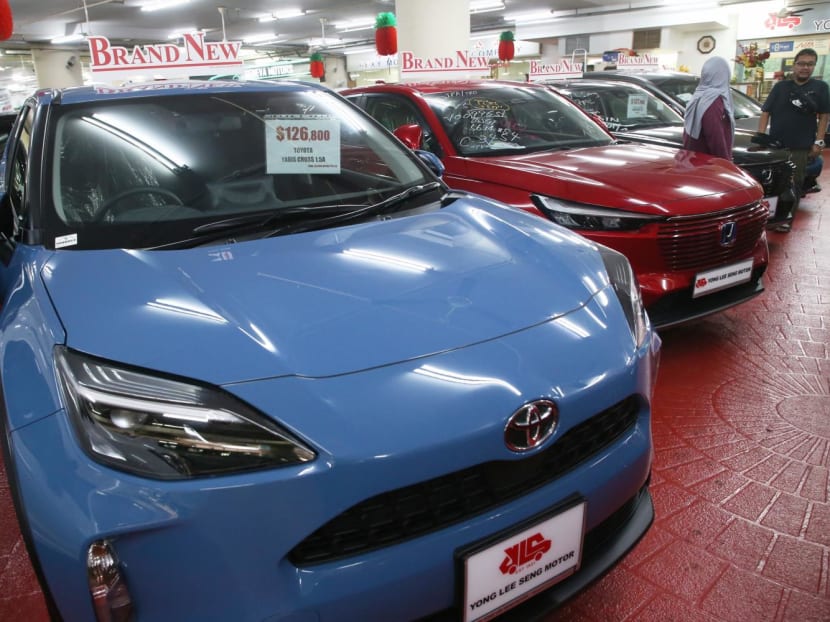LTA's latest change in COE quota counting method will smoothen supply, but has little short-term impact on prices: Experts
SINGAPORE — The authorities’ second move in six months to change how the Certificate of Entitlement (COE) quotas are calculated would smoothen out supply fluctuations, but has little impact on premium prices in the short term, industry watchers said.

- The Land Transport Authority on Friday (Jan 20) announced a change in the way it computes the number of Certificate of Entitlements available for bidding in each quarter
- With effect from Feb 1, the number will be based on the rolling average of the number of vehicles deregistered over the previous four quarters, instead of two quarters
- Industry watchers whom TODAY spoke to said the move would smoothen supply fluctuations
- However, while price swings would correspondingly be moderated, prices could still move either way in the immediate term
SINGAPORE — The authorities’ second move in six months to change how the Certificate of Entitlement (COE) quotas are calculated would smoothen out supply fluctuations, but has little impact on premium prices in the short term, industry watchers said.
On Friday (Jan 20), the Land Transport Authority (LTA) announced that with effect from Feb 1, the number of COEs available for bidding in each quarter will be computed based on the rolling average of the number of vehicles deregistered over the previous four quarters, or the preceding 12-month period.
This came after it had announced in July last year that from the month after that, it would use a calculation method to take into account the rolling average of two quarters instead of one.
LTA said on Monday that the latest change would “further reduce the quarter-on-quarter volatility of COE supply”.
As a result of the move, the COE quota for February to April 2023 will be 9,437.
Under the previous method, the quote would have been 8,695, LTA said in a press release.
The COE is needed to own and drive a vehicle in Singapore and it is usually factored into the price of the vehicle being sold.
SMALLER SWINGS IN THE LONG RUN
Transport economist Walter Theseira explained that the main effect of the move would be that it would “moderate the impact” of any quarter period where de-registrations were particularly low.
“Conversely, if de-registrations start to speed up, then the ramp-up in COE quota availability will also be reduced,” the associate professor from the Singapore University of Social Sciences (SUSS) said.
Agreeing, Assistant Professor Terence Fan, a transport researcher from Singapore Management University (SMU), said that the move would help “even out the ups and downs” of COE supply.
These would correspondingly smoothen the volatility of prices over the long term, the analysts said.
On the back-to-back changes made by the authorities, observers were largely of the view that it was a matter of the Government first testing the market with a new measure, before calibrating it further.
They added that continued fluctuation in COE prices since the change was introduced last August might have possibly prompted the authorities to take a bigger step next month.
Mr Wong Kan Sing, managing director of Autolink Holdings, said: “Because the COE (prices) have been so volatile for the past few months, they were still trying to figure out the best way forward.”
For example, though the premiums for large cars in Category B fell to below S$100,000 for the first time in five months on Oct 5 last year, it shot back up by almost 15 per cent to reach S$110,000 at the next bidding on Oct 19, before climbing further to a record high of S$115,388 at the next exercise on Nov 9.
The Nov 9 bidding exercise also saw new records set for the motorcycle and open categories.
Asst Prof Fan said that spacing out the adjustments would have allowed the Government to ensure that whatever movements that were observed in the market were due to underlying demand and not simply reactionary to the earlier changes.
IMPACT ON PRICES
Associate Professor Raymond Ong from the National University of Singapore said that although LTA had highlighted that the new calculation method would result in more COEs available in the next quarter, it would not guarantee lower prices.
The civil and environmental engineering lecturer, who has done various research on transport, said: “People may be thinking that since there’s more supply, I’ll go into the market to purchase the COE.”
Prices could either stay the same or even go up, depending on the degree of such reactions from the market, he added.
Mr Wong of Autolink Holdings said that the prices will likely remain elevated in the near term due to the relatively small pool of COEs.
“When your supply is low, no matter what you do, and you cannot tame the demand, it will just just continue being more than the supply, it's as simple as that,” he added.
The experts agreed that bigger factors are at play in determining the longer-term direction of COE prices.
On the supply side, the number of COEs available in a year would roughly follow a 10-year cycle, as most consumers would typically hold on to their COEs until nearing the end of their validity period.
Thus, in this regard, car dealer Raymond Tang said that consumer behaviour would also further affect the supply.
“COE supply 10 years ago was already so little. If, for example, half choose not to scrap their cars, that means only 50 per cent of COE supply will be recycled back into the industry,” the managing director of Yong Lee Seng Motor said.
Assoc Prof Theseira from SUSS said that the authorities’ move to account for the last four quarters’ worth of COE de-registration in determining the current availability “will not really do anything” to smoothen out the disparity of supply across different years.
The analysts said that on the demand side, as with other spending, consumers could be affected by broader economic considerations.
Mr Wong of Autolink pointed to another factor that may affect demand-side behaviour is the anxiety from the bidding process, which happens every two weeks.
He said that industry players such as car dealers might feel “pressured” to bid higher to ensure that they get their supply of certificates instead of having to to wait another two weeks should they fail in their bid.
“One solution is to remove the fear of missing out on COEs by keeping the bidding (exercises) as close as possible, maybe on a weekly basis,” he suggested.
Asst Prof Fan of SMU said that such an idea might help ease the “reactionary” thinking on the part of bidders to a certain extent, though it is only one part of the wider picture.
“Ultimately, if the demand overall is still high, prices are still going to go up,” he added.











